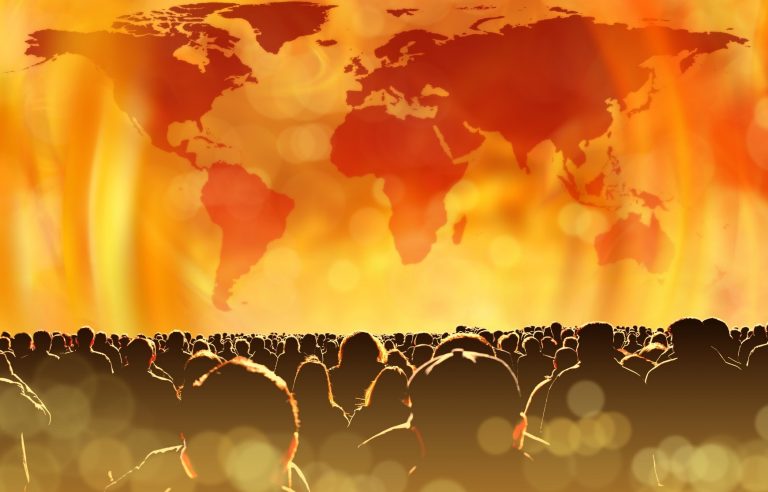Human rights are a low priority for many national climate change adaptation policies, new Concordia research finds

The link between human rights and climate change adaptation policy has not been a major source of discussion in national policies, according to a new Concordia-led study. Moreover, the researchers say the topic should play a bigger role in the upcoming COP28 conference, opening this week in Dubai.
The paper was published in the journal Climate Policy. Assistant professor in Concordia’s Department of Geography, Planning and Environment Alexandra Lesnikowski co-authored the study with researchers from McGill University’s Faculty of Law.
What they discovered should come as no surprise to close observers of international climate talks.
In the study, the researchers assessed the existing national adaptation policies of 147 countries. They found that human rights are distant considerations for most countries — if they are considered at all.
“While many countries identify structural drivers of climate vulnerability like poverty or gender, only a third of countries mention human rights in any way,” Lesnikowski says.
Vulnerable groups appear to be largely excluded from planning and decision-making processes. And half of the world’s countries do not identify specific measures to reduce their vulnerability.
Finally, no accountability measures are proposed for groups seeking redress due to harms suffered by adaptation policies.
“The countries that signed the Paris Agreement in 2015 committed themselves to respecting and promoting human rights alongside the different types of actions taken to address climate change,” Lesnikowski explains.
“It is now eight years after the agreement has been signed. We are asking whether countries are meeting their obligations to recognize the relationship between climate change and human rights, and integrating a human rights lens into the policies they are adopting.
“Overall, we are not seeing the level of commitment that we were hoping to find.”
Sébastien Jodoin, Jean-Philippe Lemay, Verity Thomson and Kasia Johnson from McGill University’s Faculty of Law co-authored the paper.
 Alexandra Lesnikowski: “Overall, we are not seeing the level of commitment that we were hoping to find.”
Alexandra Lesnikowski: “Overall, we are not seeing the level of commitment that we were hoping to find.”
Geography and income drive language
The researchers did note a geographical clustering of countries that mentioned human rights in adaptation policies versus those that did not.
Countries in Latin America, the Caribbean and sub-Saharan Africa were more likely to include language that addresses human rights. Most high-income countries did not, though Canada and Norway are the exceptions.
References to structural inequalities in adaptation policies were also notedly different depending on geography and income.
Seventy-eight percent of the countries in the dataset had at least one policy that recognizes the role structural inequality plays in shaping climate change-related vulnerability. However, non-industrialized or industrializing countries were more likely to discuss structural inequality than industrialized countries.
The most frequently cited types of inequality in adaptation strategies were social (often age-related, particularly regarding the very old and the very young), economic and gender. The least mentioned types concerned Indigeneity, disability and ethnic/racial identity.
Converging interests
Lesnikowski points out that it is the economically, socially and politically marginalized who tend to bear the greatest health burdens resulting from climate change. Examples include subsistence farmers, poor people and elderly people living in urban heat islands.
“We also see clear regional patterns regarding the recognition of Indigenous peoples as being particularly vulnerable to climate change."
“That distinction reflects differences in global distribution of Indigenous communities and how countries recognize them.”
Despite the lack of formal language in adaptation policies, Lesnikowski does see a growing interest in recognizing the relationship between climate change and human rights.
“A growing scholarship is looking at how the structural drivers of climate change vulnerability are tied to issues of marginalization, exclusion and oppression,” she says.
“Interest in bringing those two different domains together, both on the research side and the policy discourse side, is expanding.”
The Social Sciences and Humanities Research Council of Canada supported this study.
Read the cited paper: “Human rights in climate change adaptation policies: a systematic assessment”


